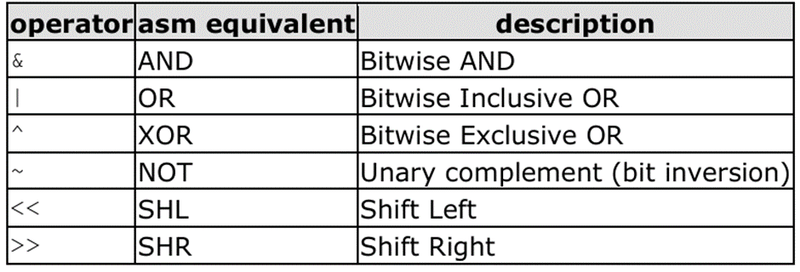CH -4 Operator
Arithmetic, relational, logical, bitwise, and assignment operators
Operators
Once we know of the existence of variables and constants, we can begin to operate with them. For that purpose, C++ integrates operators. Unlike other languages whose operators are mainly keywords, operators in C++ are mostly made of signs that are not part of the alphabet but are available in all keyboards. This makes C++ code shorter and more international, since it relies less on English words, but requires a little of learning effort in the beginning. You do not have to memorize all the content of this page. Most details are only provided to serve as a later reference in case you need it.
1) Assignment (=)
The assignment operator assigns a value to a variable.
a = 5;
a = b;This statement assigns the integer value 5 to the variable a. The part at the left of the assignment operator (=) is known as the lvalue (left value) and the right one as the rvalue (right value). The lvalue has to be a variable whereas the rvalue can be either a constant, a variable, the result of an operation or any combination of these. The most important rule when assigning is the right-to-left rule: The assignment operation always takes place from right to left, and never the other way:
2) Arithmetic operators ( +, -, *, /, % )
The five arithmetical operations supported by the C++ language are:
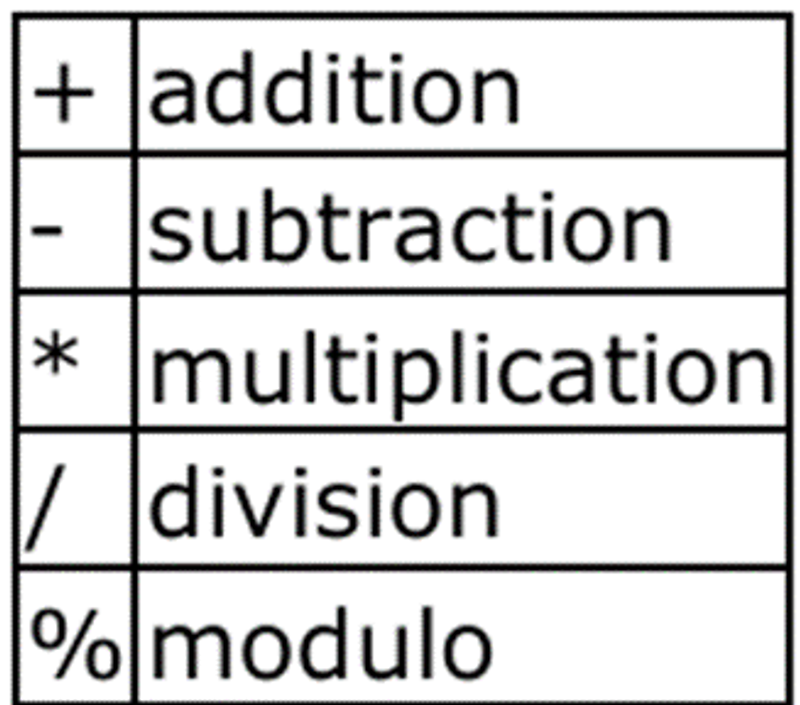
Operations of addition, subtraction, multiplication and division literally correspond with their respective mathematical operators. The only one that you might not be so used to see is modulo; whose operator is the percentage sign (%). Modulo is the operation that gives the remainder of a division of two values. For example, if we write:
a = 11 % 3;the variable a will contain the value 2, since 2 is the remainder from dividing 11 between 3.
3) Compound assignment (+=, -=, *=, /=, %=, >>=, <<=, &=, ^=, |=)
When we want to modify the value of a variable by performing an operation on the value currently stored in that variable we can use compound assignment operators:

and the same for all other operators. For example:
// compound assignment operators
#include <iostream>
using namespace std;
int main ()
{
int a, b=3;
a = b;
a+=2; // equivalent to a=a+2
cout << a;
return 0;
}Output: 5
4) Increase and decrease (++, --)
Shortening even more some expressions, the increase operator (++) and the decrease operator ( ) increase or reduce by one the value stored in a variable. They are equivalent to +=1 and to =1, respectively. Thus:
c++;
c+=1;
c=c+1;are all equivalent in its functionality: the three of them increase by one the value of c.
A characteristic of this operator is that it can be used both as a prefix and as a suffix. That means that it can be written either before the variable identifier (++a) or after it (a++). Although in simple expressions like a++ or ++a both have exactly the same meaning, in other expressions in which the result of the increase or decrease operation is evaluated as a value in an outer expression they may have an important difference in their meaning: In the case that the increase operator is used as a prefix (++a) the value is increased before the result of the expression is evaluated and therefore the increased value is considered in the outer expression; in case that it is used as a suffix (a++) the value stored in a is increased after being evaluated and therefore the value stored before the increase operation is evaluated in the outer expression. Notice the difference:

In Example 1, B is increased before its value is copied to A. While in Example 2, the value of B is copied to A and then B is increased.
5) Relational and equality operators ( ==, !=, >, =, <= )
In order to evaluate a comparison between two expressions we can use the relational and equality operators. The result of a relational operation is a Boolean value that can only be true or false, according to its Boolean result. We may want to compare two expressions, for example, to know if they are equal or if one is greater than the other is. Here is a list of the relational and equality operators that can be used in C++:
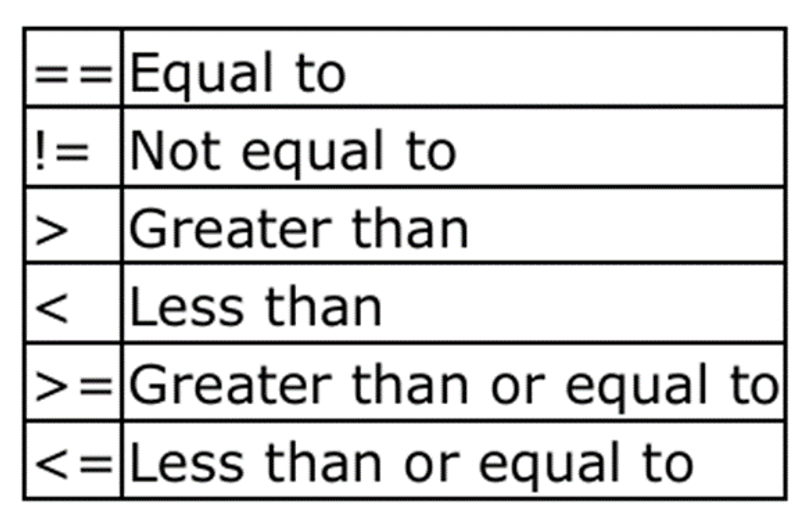
Here there are some examples:
(7==5) // evaluates to true.
(5 > 4) // evaluates to true.
(3 != 2) // evaluates to false.
(6 >= 6) // evaluates to true.
(5 < 5) // evaluates to false.6) Logical operators ( !, &&, || )
The Operator ! is the C++ operator to perform the Boolean operation NOT, it has only one operand, located at its right, and the only thing that it does is to inverse the value of it, producing false if its operand is true and true if its operand is false. Basically, it returns the opposite Boolean value of evaluating its operand. For example:
! (5 == 5) // evaluates to false because the expression at its right (5==5) is true.
! (6 <= 4) // evaluates to true because (6 <= 4) would be false.
!true // evaluates to false
!false // evaluates to true.
The logical operators && and || are used when evaluating two expressions to obtain a single relational result. The operator && corresponds with Boolean logical operation AND. This operation results true if both its two operands are true, and false otherwise. The following panel shows the result of operator && evaluating the expression a && b:
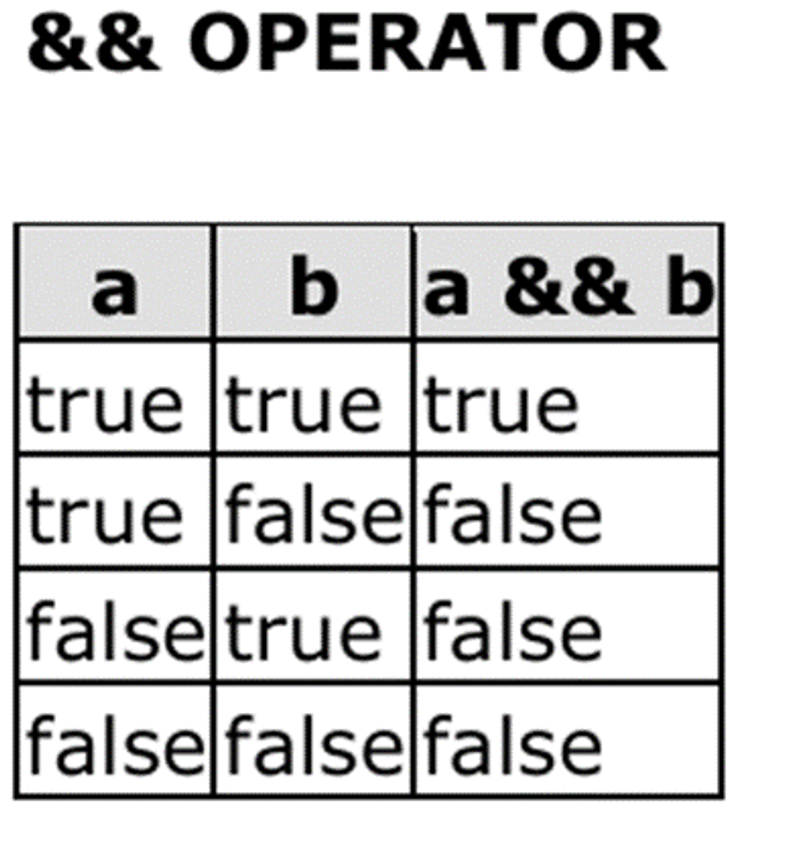
The operator || corresponds with Boolean logical operation OR. This operation results true if either one of its two operands is true, thus being false only when both operands are false themselves. Here are the possible results of a || b:
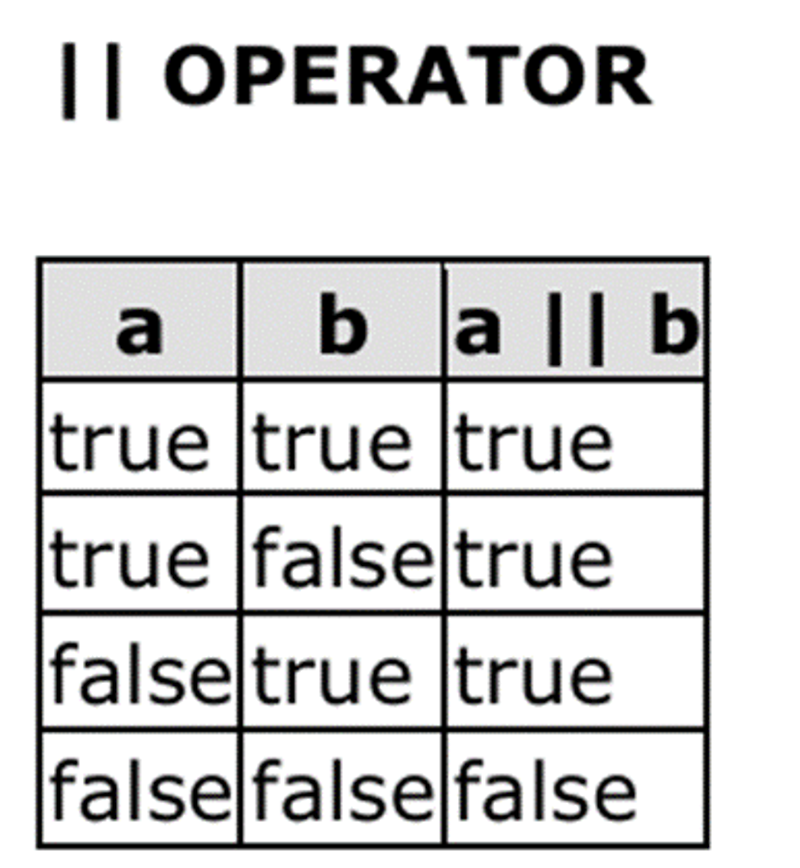
For example:
((5 == 5) && (3 > 6))
// evaluates to false (true && false ).
((5 == 5) || (3 > 6)) // evaluates to true ( true || false ).7) Conditional operator ( ? )
The conditional operator evaluates an expression returning a value if that expression is true and a different one if the expression is evaluated as false. Its format is:
condition ? result1 : result2
If condition is true the expression will return result1, if it is not it will return result2.
7 == 5 ? 4 : 3 // returns 4, since 7 is equal to 5+2.
7 == 5 + 2 ? 4 : 3 // returns the value of a, since 5 is greater than 3.
5 > 3 ? a : b // returns 3, since 7 is not equal to 5.
a > b ? a: b // returns whichever is greater, a or b.8) Bitwise Operators ( &, |, ^, ~, <> )
Bitwise operators modify variables considering the bit patterns that represent the values they store.
